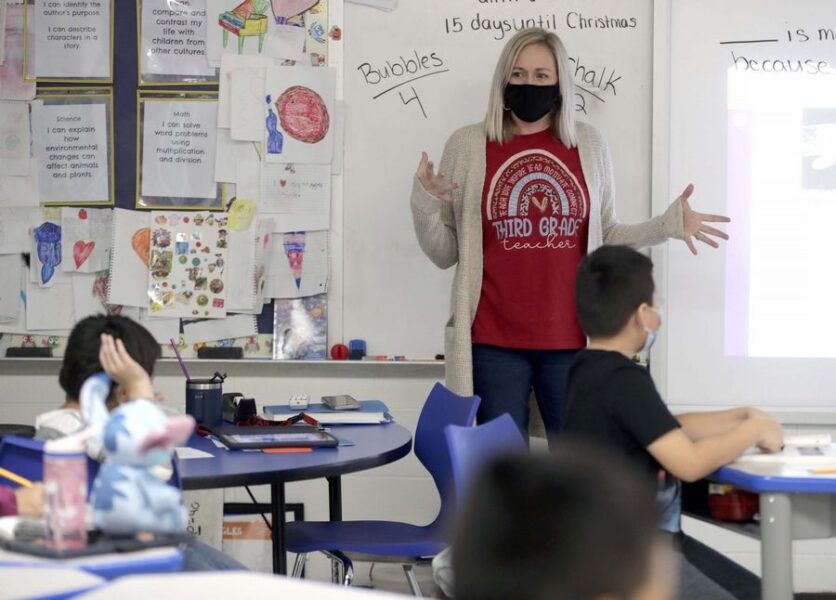By Marni Pyke, 02/02/2022

By the fall of 2021, parents and teachers had the COVID-19 playbook down — masking, social distancing, vaccinations. Then came omicron.
The super-infectious COVID-19 variant exploded over December and January, infecting students and teachers who’d eluded the virus for months, causing staff shortages and closures particularly after the winter break.
“How bad was it? It’s been crazy,” Algonquin-based Community Unit District 300 teachers union President Michael Williamson described the post-holiday surge in a recent interview.
“We joked about it, me and the administration and the union executive committee,” Williamson said. “It felt like back in the first week of the pandemic. You just didn’t know what was going on.”
By now, most educators are used to COVID-19 crises, but with omicron infecting so many, it forced everyone from administrators to custodians to dig deep so schools could stay open, Williamson said.
“It’s not just teachers in front of kids. You’ve got to make sure there’s custodians, you’ve got to make sure there’s nurses, you’ve got to have administrators.”
At one point, the district was worried a building would have to close because the custodian team was sick. Other custodians, stepped up, saying, “We’ll go there. We’ll make this work,” Williamson recalled.
From Dec. 24 to 30, new COVID-19 cases among children and teens numbered 325,340 across the U.S., American Academy of Pediatrics data shows.
A month later, the count was closer to 1 million a week. Over 1.9 million new cases were reported between Jan. 13 and Thursday. Children age 4 and younger are not eligible for vaccines.
Omicron typically causes less severe illness than other COVID-19 strains such as the delta variant, but the sheer volume of infections was staggering. Some districts across the state did have to close buildings, including Elgin Area School District U-46 and Des Plaines Elementary School District 62.
Des Plaines parent Zach Weller’s 7-year-old son, Ben, was among students affected by District 62’s decision to cancel classes for several days the week of Jan. 9 because of rising COVID-19 infections and staff absences.
“I am disappointed,” Weller told the Daily Herald on Jan. 13. “However, I understand the limitations of the district, and with shortened staff numbers, they are not able to effectively educate the children at the moment.
“My kids, of course, would love to be in school, but they are troopers and enjoy spending their time with their dad and family.”
Northwest Suburban High School District 214 was able to avoid closures, but “coming out of winter break we did have a significant number of students and staff who were out, but we managed,” Superintendent David Schuler said.
“A lot of teachers who were in helped by covering classes during their prep periods, and administrators also covered classes. At least for this phase, we’ve weathered the storm.”
COVID-19 cases began receding mid-January in Illinois. As of Friday, the seven-day average for new cases was 11,153 compared to a peak of 32,501 Jan. 12.
The CDC’s adjusted guidelines reducing quarantine for schools from 10 to five days were adopted by the state Jan. 11, easing some staff shortage pressure.
“It’s allowing more students back in school, as long as they’re asymptomatic, and staff, so that’s been wonderful,” Schuler said.
Meanwhile, Tuesday’s total new infection count of 8,665 is vastly lower than tallies of over 40,000 on Jan. 21 and Jan. 22, but it’s still nowhere near the 2021 new-case average of 1,188 a day.
For Long Grove mother Allison Locascio, who has two children at Stevenson High School, “I feel like it’s not over until it’s over,” she said. Currently, “when I send my kids to school, I’m concerned especially with people who aren’t wearing masks properly.”
• Daily Herald staff writer Russell Lissau contributed to this report.
Copyright 2022 Daily Herald (www.dailyherald.com)